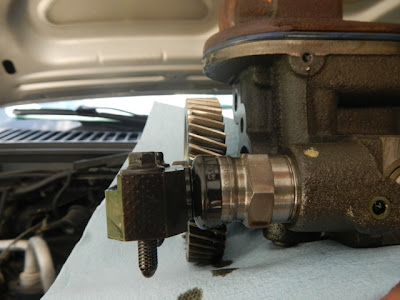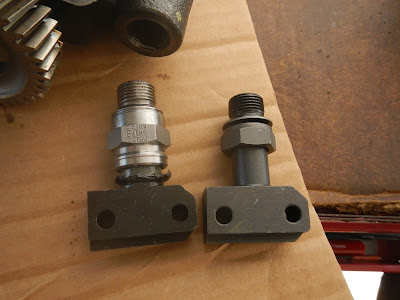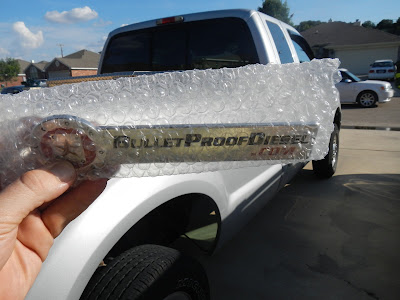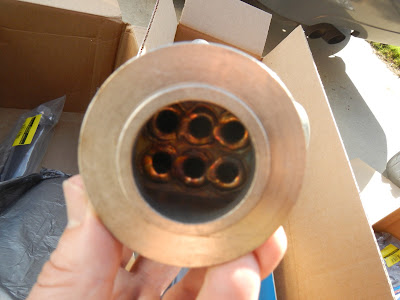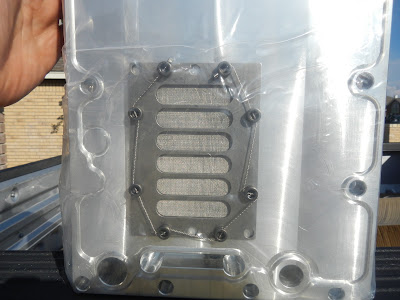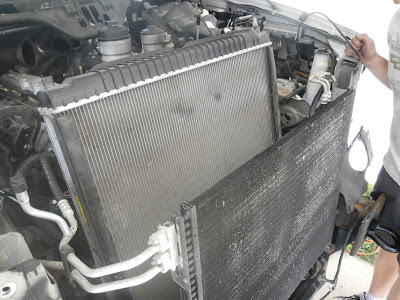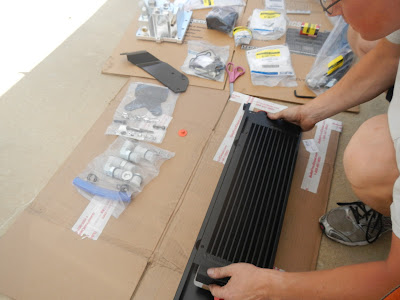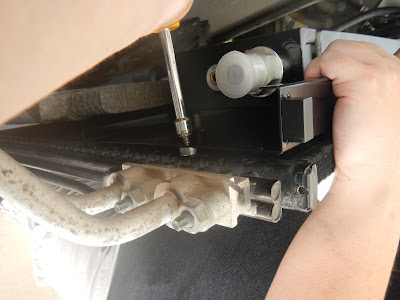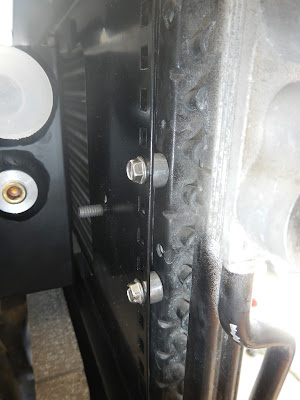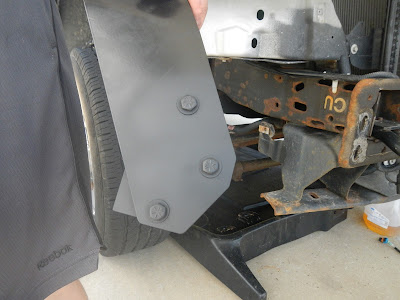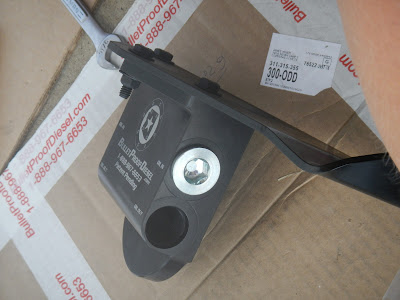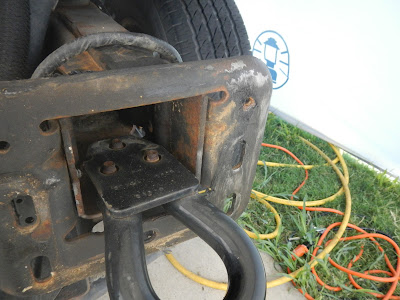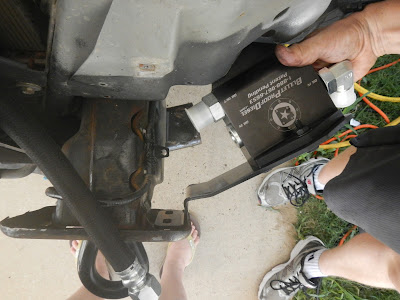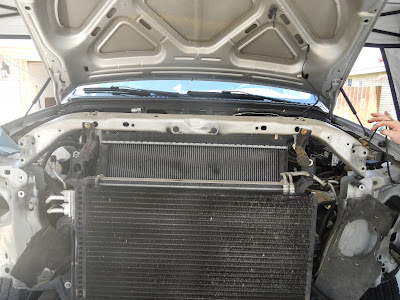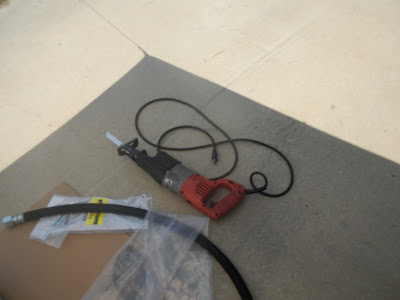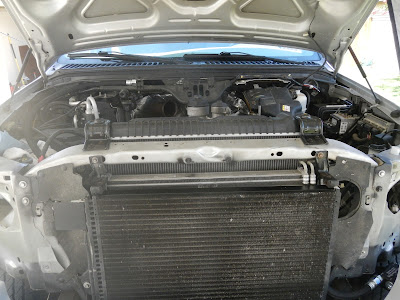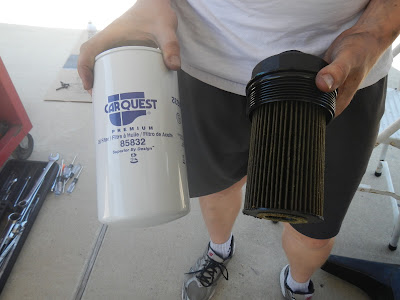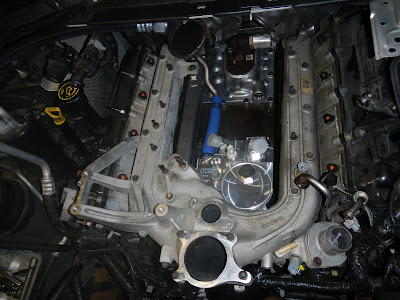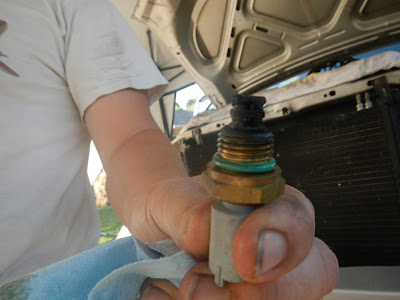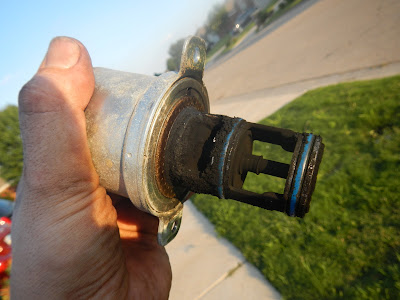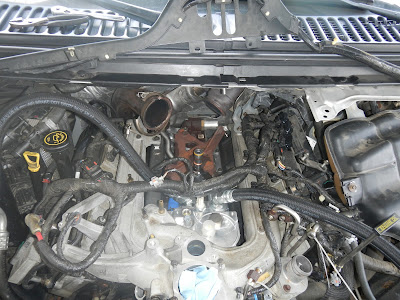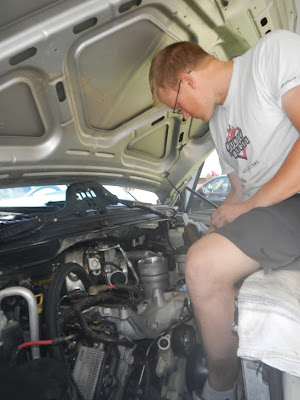Today's post is about a project, but not so much of a work in progress, yet I'm still trying to solve a problem. The subject is a 1968 Mercury Cougar, which was purchased as a project car then had to be left behind. This first picture was taken around January of 2007 shortly
after I took possession of the car; the second is current as of June 2012.
 |
| January 2007 |
 |
| June 2012 |
The car had a 302 that was bored .040” over. However the block still had some damaged cylinder walls. It’s hard to go much larger than this on a stock 302 so I found a new engine.
 |
| This pitting is a
result of something called “washdown”… |
 |
| The cross-hatch
groves in the cylinder wall are meant to hold on to engine oil. This thin layer
of oil protects the piston rings from welding to the cylinder walls. |
 |
| When an engine is run
overly rich the extra fuel entering the cylinder through the intake port washes
the oil off of the cylinder wall. Since the lubricant is gone the rings start
welding to the cylinder walls, the rings being a harder metal than the cast
iron block pulls material away from the cylinder leaving a pitted surface.
Usually this can be fixed by boring the engine block, unfortunately this engine
has already been bored .040” larger than stock and is maxed out. Only two
things could be done with this engine now. Either press cylinder sleeves in or
junk it. Since this is a common 302 block it is
cheaper to find a healthier block and try to get some money out of this as
scrap metal. |
 |
| I picked this engine
up for $200. It was just rebuilt with cast pistons and was bored .030” over.
The pistons from the old gray engine are forged +.040” Speed Pros. And although
they were run in the old engine a bit –that engine was never really broke in.
So those this block could be bored .040 over and the forged pistons installed. |
 |
| This engine has some
light rust on the sealing surfaces but can clean up easily. |
 |
| The stock crank coated in grease and wrapped up. |
 |
| Stock 302 rods with forged Speed Pro pistons. These pistons are .040" over sized |
 |
| The crank bearing caps Speed Demon Carburetor and other small parts are all stashed in these storage bins. |
 |
| The blue engine was completely assembled and came with stock valve covers, Fox Body oil pan, etc. |
 |
| I still have the
Cobra valve covers and V-belt pulleys that were on the Cougar. The blue engine came with
serpentine pulleys (including a standard rotation water pump serpentine pulley),
and an updated power steering pump. |
 |
| Here's the old Edelbrock Performer 289 intake manifold. |
 |
| And the still fresh looking ceramic coated headers. |
The blue engine also came with this Cobra/GT40 style EFI intake manifold.
The body is in overall good shape, while inspecting the
wiring in the trunk I discovered that the rear fenders had been
reskinned. It was an excellent
job,
the seam at the rear roof pillar is undetectable. The front fenders had some professional work done as well.
The body needs very minor work to make it good to go, mostly just bolt on parts that can be found in a catalog. The two most critical items are the left front fender and the rear valance. The fender would most likely get re-patched. the valance could be fixed very easily or just replaced, they cost about $125 new.
 |
| The fender was patched once before and could be re-patched or replaced just depends on price. |
|
 |
| The rear valance go tweaked some where along the way. It doesn't have any significant rust damage so it could be repaired. Or simply replaced. |
For as good of shape that the body is in the bottom side of the car is in bad shape. I don't have the full back ground on the car but it looks like it was up north somewhere. It basically needs a whole new bottom side to it; front to rear.
Here are a few shots inside of the left front fender, not so pretty is it? There are few if any useable parts here and this is just one corner of the car.
The other side of the front is bad too. and there is evidence of work being done some time in the past in an attempt to repair some of this rust.
The worst part is the frame is shot too, and somebody tried to fix it before, the wrong way -twice!
 |
| This is the toeboard, aka the front side of the sheet metal under the pedals. |
 |
| Notice the rust-through in the frame and the sheet metal behind the edge of the A-arm. |
|
 |
| This is a picture of the left front frame rail as viewed from under the transmission. At the top you can see some over spray on the bottom side of a new floor board which was not installed properly. There should be no gap between the old and new floor boards, in fact to fix this right the remains of the old floorboard should have been removed completely. You should never cover rusty metal. Rust is a cancer and should be removed, replacing or patching rusty floor boards mandates that all rusty metal is completely removed and a patch that matches the area cut away get welded in. If welded in right you can grind the welds flat and hide the patch completely with paint. In the center of this picture is a tab for the park brake cable. notice the frame is notched around the tab -somebody capped the rusty frame rail. |
 |
| Here is the front edge of the frame cap and some of the rust that was left to eat away at the car. The top right corner of the picture shows the bottom side of the steering box. This is a critical part of the frame (which is pretty important already). When I saw this damage I immediately decided to remove the engine from the car. I was worried that moving the car at all with damaged frames like this could cause the car to buckle under the weight of the engine. |
|
|
If you are trying to repair rust damage why leave rust in the car? Patch panels are just that not cover up the ugliness panels typically floor pans are made of several pieces of sheet metal that are welded together. For most cars that are popular with hot-rodders you can buy individual panels or complete floor pans. Often times the only part of the floor that is truly damaged are the low points and corners where moisture collects. In these cases you can buy and individual panel and go one of two routes to repair the rust. Either works fine, the first is to cut or drill out the original welds, and weld the entire new panel in. The second way is to cut out only the sections of the old floor, then use that piece to trace on the new panel so you are only replacing the rusty metal and leaving as much of the original metal behind as possible. Again either way is fine, but they each have pros and cons. The entire panel process takes longer to cut the old panel out, and there will be more welding to do. The small patch panel could be noticed by a judge if you are entering your car in a concurs restoration competition, but it's less cutting and welding.
 |
| Here is a properly patched floor (courtesy of www.oldcarsweekly.com). Notice they welded the patch in place of the original sheet metal, not over it. |
 |
| Here is an underside shoot of the passenger side floor board of the Cougar. Notice the layers of sheet metal. Debris and moisture will get caught between the layers and cause more rust. This particular section could be saved; the patch panel could be lifted out, cut down to size and welded back in. However due to the amount of surface rust that is on these parts I would personally just replace everything. |
 |
| Here is the top side of the same section of floor from the last picture, doesn't look bad with the exception of the lumpy tack welds. Consider this a word of caution when/if you ever take over someone's project car. |
So by my tally it would take about two thousand dollars to get the structure of the car up to a safe condition. And that's before suspension, drive train, wiring, interior, and all of the other details that a car needs to get it down the road. I don't have much sentimental attachment to this car, it kind of fell into my lap. I do really like the look of this car and I could see myself in it. But the truth is this was someone else's dream car, and I would rather have an
SVO Mustang. So here is my dilemma; Do I do the noble thing and return this car to the friend that was forced to leave it behind? Do I sell it as is to fund my SVO? Or do I restore it and sell it to make money for my SVO? I could keep the car indefinitely, but I will always want an SVO and can't justify having two toys. What are your thoughts?




























